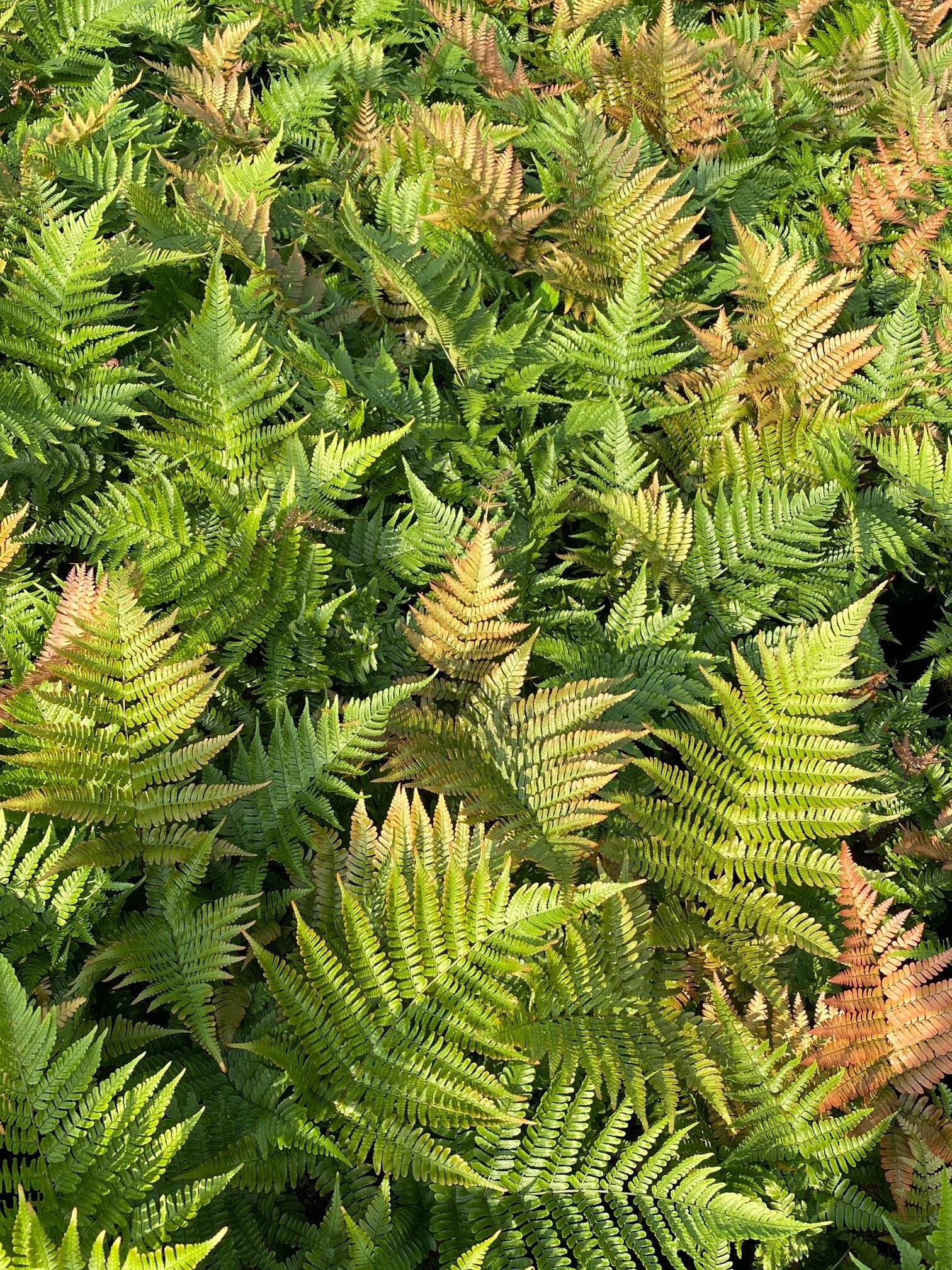My Best Fronds: Favorite Ferns for the Garden
In the Garden with Andrew
Andrew Bunting. Photo courtesy of the Pennsylvania Horticultural Society.
A gardening friend said to me the other day, “I never met a fern I didn’t like.” I generally agree. While some ferns are too aggressive for my garden, almost all can find a niche in somebody’s landscape.
Many ferns are native, while some are not. Most are truly deer resistant. Entire reference works have been written about them, such as David Jones’s “Encyclopaedia of Ferns.” This article will highlight some of my favorites. Some I love for their beautiful fronds, some for their adaptability — able to grow in deep dark shade or in wet, poorly drained conditions — and some because they’re native to this region.
A true Delaware County and Crum Woods native is the Christmas fern, Polystichum acrostichoides, so called because, as an evergreen, its fronds are still ornamental at Christmas. It has upward facing, 8 to 12-inch long fronds. One of its best attributes is that it will grow in extreme shade, including dry shade.
The fronds of evergreen ferns can be cut back in mid-March. This allows new fronds to unfurl in April. Deciduous ferns can be cut back in late fall.
The leaves of autumn fern provide excellent winter interest. Photo: Andrew Bunting
An Asian evergreen with stunning leaves is the Japanese tassel fern, Polystichum polyblepharum, whose intricately textured leaves form a rosette about 12 inches across. The scientific epithet “polyblepharum” refers to the wooly “fuzz” on the leaves. In Latin, “poly” means “many,” and “blepharum” means “eyelashes.”
Another great evergreen is the autumn fern, Dryopteris erythrosora. It is most likely called the autumn fern because the newly emerging leaves are largely bronze with other autumnal hues. Its leaves form a dense clump that provides excellent winter interest.
Some of my favorite of all the ferns are the Japanese painted fern, Athyrium nipponicum ‘Pictum’, and related hybrids. This spreading fern can grow in deep shade, and its delicate, silvery-white fronds often have purple-to-red tints. Athyrium ‘Ghost’ will brighten a shady spot with whitish-gray, upward-facing leaves. ‘Ghost’ is a hybrid of the Japanese painted fern and the lady fern, Athyrium filix-femina. ‘Lady in Red’ is a lady fern with very erect lacy fronds and a red mid-rib. It will tolerate both shade and a fair amount of sun.
For parts of your yard with poor drainage, the cinnamon fern, Osmundastrum cinnamomeum, is an excellent choice. The upright facing fronds are light green and they form spreading, vase-like clumps. In spring, the emerging fertile fronds are a rich brown color: hence the name “cinnamon.” If you are looking for a quick-to-cover, aggressive fern for moist conditions, consider the ostrich fern, Matteuccia struthiopteris — but be aware that it really does spread fast. A terrific larger fern is the royal fern, Osmunda regalis, with fronds up to 5 feet tall. It can tolerate moist soils or even standing water.
And, if you want to try some fun ferns, consider Arachniodes standishii, the upside-down fern. This evergreen needs a little protection in our climate. Its fronds are incredibly intricate and almost appear to be made of plastic. It’s a great choice for a small shady nook where you keep your most treasured plants.
The world of ferns is diverse. It includes tiny ferns that grow in the deepest and darkest parts of forests, and the tree ferns of New Zealand that tower almost 100 feet tall. In the Delaware Valley, we are fortunate to have an amazing array of great ferns we can select for our gardens.
Send your gardening questions to editor@swarthmorean.com.
Andrew Bunting is vice president of public horticulture at the Pennsylvania Horticultural Society and vice president of the Swarthmore Horticultural Society.





